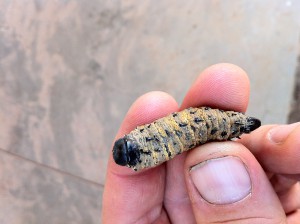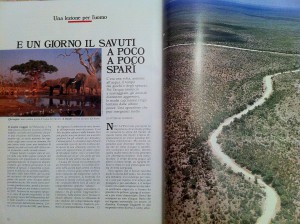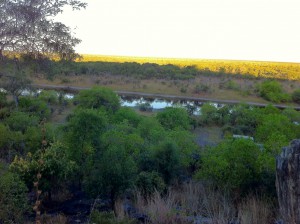Of old magazines and new travels
About the small treasure at My father’s country house, my collection of Astronomy and Nature magazines dating back in the 80’s and 90’s.There is a small treasure at My father’s country house. It is my collection of Astronomy and Nature magazines dating back in the 80’s and 90’s. Today i was at home having a look at my old collection of “Airone” an italian magazine which tried to imitate – but with local interesting peculiar traits – the National Geographic Magazine in the 80’s. I noticed two interesting articles that probably i wouldn’t without having being part of my recent beautiful Botswana experience.
How do you tell a “yummy” snack from a deadly poisonous addictive for bushmen’s arrows?
It’s early in the afternoon near Kasane, Botswana. After several days in the bush our group stops in a small mart to finally buy stuff. Â A “Local” offered us a “yummy” snack, a bag full of roasted Mopane Worms (Imbrasia Bellina) which (almost) everyone tried out. Well, having a look at my magazines collection, i found an interesting article about Bushmen in Botswana and their tools-of-the-trade for hunting. There was, though, a picture of these men that uses larvae of Diamphidia and Plyclada, two different genus of beetle. Their poisonous “juice” is used by the Bushmen to make their arrow deadly venomous for hunting. These larvae, though innocue at a first look, have enough poison to kill a man in a few hours. What if we were given a bag of this larvae? Who might have been so smart to tell the difference? Have a look at the photo below…
Exact! That’s why we took with us two talented biologists (or why they mercifully came with us). Of course, pure chance that three people of our group has been very very very sick that evening… 😉
Water then and now.
One of the sites visited that impressed me much with primeval feelings was the surroundings of the Savuti river. Our guides told us about the Savuti Channel, which stopped flowing between 1980 and 2008 becoming a ribbon of grassland that served as a corridor and feeding ground in the surrounding woodland for a wide variety of herbivores. The channel became a waterway again in 2008, welcoming back hippos, aquatic life and several varieties of waterbirds, and forcing wildlife to adapt to the new source of water impacting the territory.
Imagine how i felt when i read these pages (above) from 1992 about the processes which caused the slow disappearance of the Savuti…
I’m very happy to having been able to take stupid pictures like these today 🙂








Leave a Reply
Want to join the discussion?Feel free to contribute!